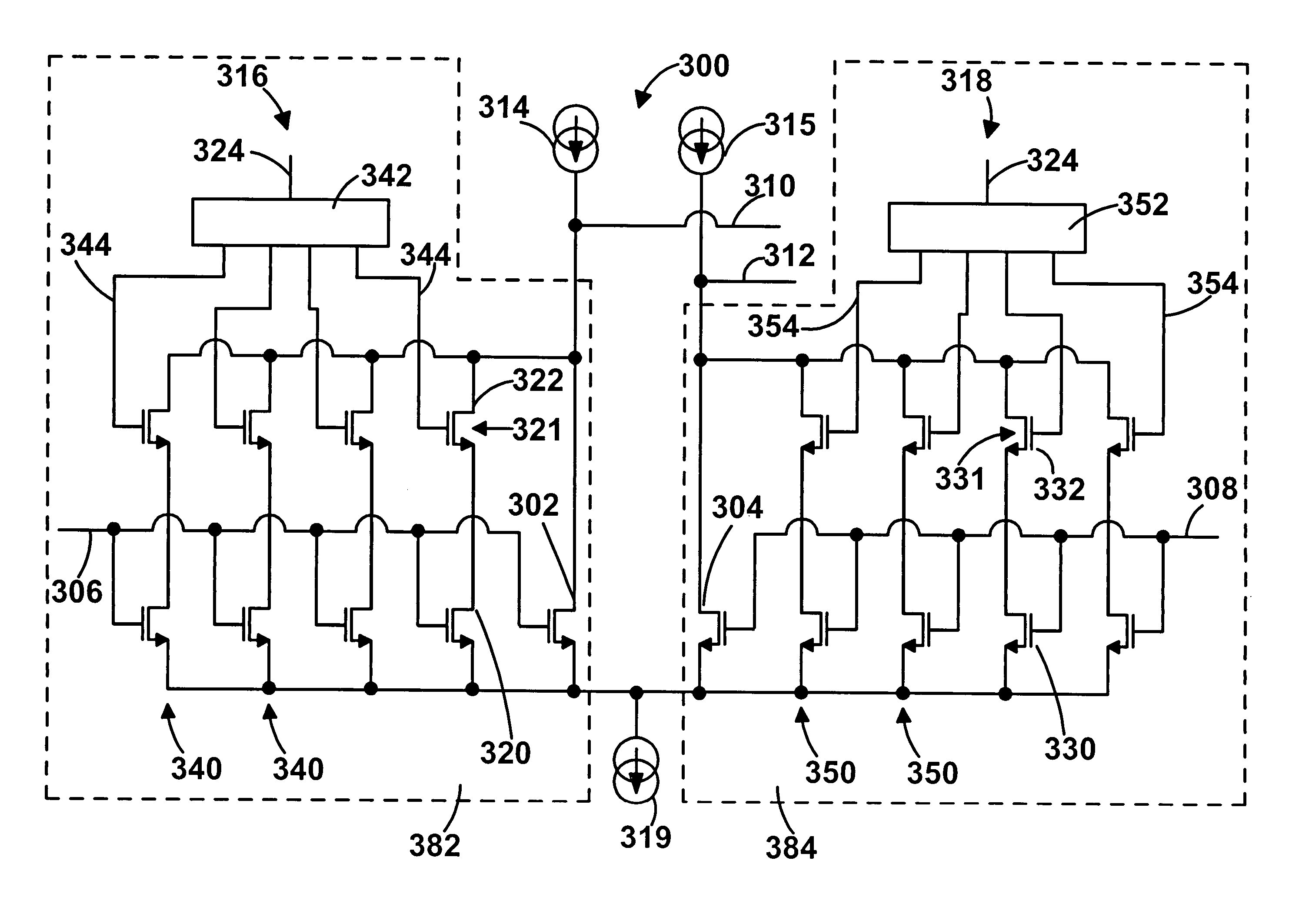Tunable differential transconductor and adjustment method
a transconductors and differential technology, applied in the field of tunable differential transconductors and tuning methods, can solve the problems of impairing affecting the performance of the transconductors, and only holding the square law model described abov
- Summary
- Abstract
- Description
- Claims
- Application Information
AI Technical Summary
Benefits of technology
Problems solved by technology
Method used
Image
Examples
Embodiment Construction
FIG. 2 is a circuit diagram showing a first embodiment 200 of a tunable differential transconductor in accordance with the invention. Differential transconductor 200 is composed of a composite FET 282 and a composite FET 284 connected as a differential pair. Each composite FET is composed of a main FET and a switchable tuning element connected in parallel. The switchable tuning element is operable to change an effective channel dimension of the composite FET.
Composite FET 282 is composed of a main FET 202 and a switchable tuning element 216 connected in parallel. Switchable tuning element 216 is a series circuit 240 composed of an auxiliary FET 220 and a switch 221 connected in series. Series circuit 240 is connected between the source and the drain of main FET 202 and the gate of auxiliary FET 220 is connected to the gate of main FET 202 to connect switchable tuning element 216 in parallel with main FET 202. The nodes where switchable tuning element 216 connects to the drain, gate...
PUM
 Login to View More
Login to View More Abstract
Description
Claims
Application Information
 Login to View More
Login to View More - R&D
- Intellectual Property
- Life Sciences
- Materials
- Tech Scout
- Unparalleled Data Quality
- Higher Quality Content
- 60% Fewer Hallucinations
Browse by: Latest US Patents, China's latest patents, Technical Efficacy Thesaurus, Application Domain, Technology Topic, Popular Technical Reports.
© 2025 PatSnap. All rights reserved.Legal|Privacy policy|Modern Slavery Act Transparency Statement|Sitemap|About US| Contact US: help@patsnap.com



